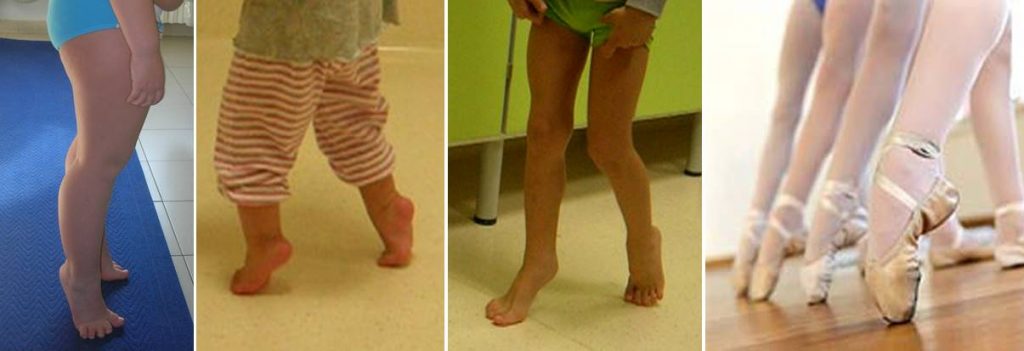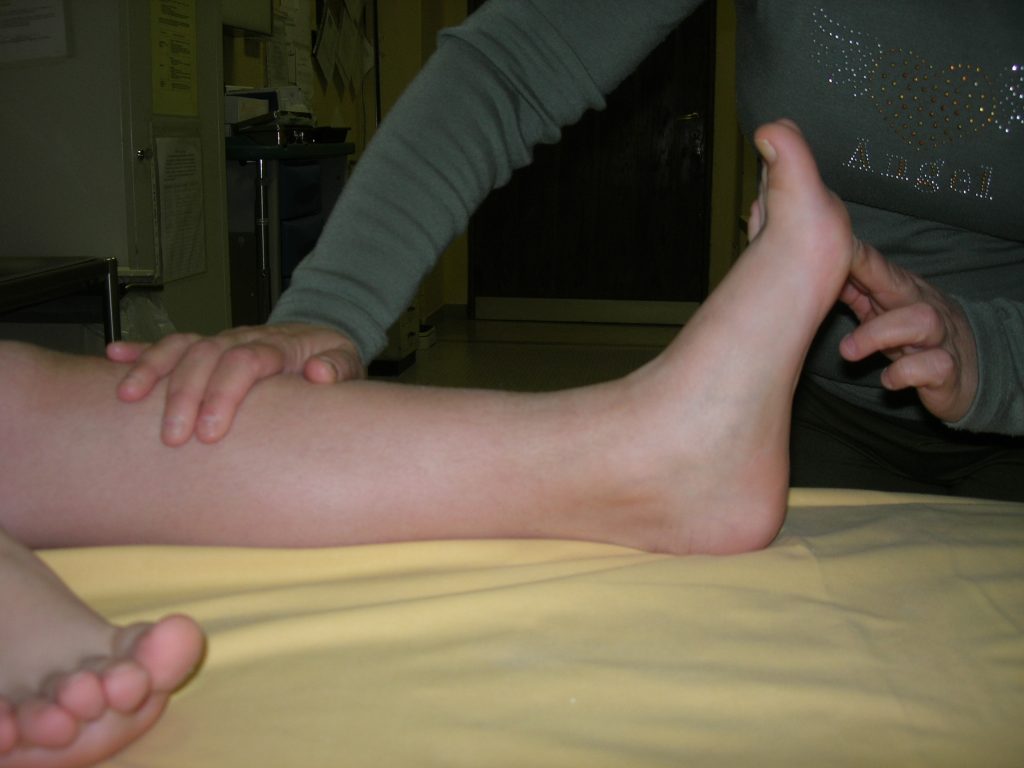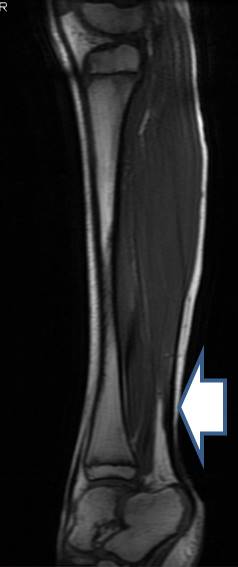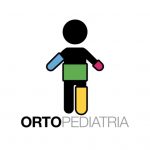Toe Walking in children: physiological or worrying?
Toe Walking is a type of walking, mainly or constantly on tiptoe. More precisely, there is an alteration of the pattern of walking: the load is concentrated mainly or exclusively on the front of the foot (forefoot/fingers), while the back of the foot (rear foot) receives the load in limited quantities, or for a limited period of the step cycle, or does not receive it at all.
Many parents require an orthopaedic visit because their children “always walk on tiptoe”, “if we scold him and he concentrates he walks well, but as soon as he gets distracted, he goes back to the tips of his feet”, “he consumes only the anterior part of the sole of his shoes”.
For this type of walking, the term “dancing gait” has also been used, because it resembles the tiptoe gait typical of ballet dancers.

One of the constant characteristics of toe walking is that this gait involves both lower limbs in a rather symmetrical way; therefore, cases of walking on the tip that affect a single limb should be excluded from this definition. This is a simple concept but for which we often see errors in the diagnosis.
Toe walkers are not all the same
Children walking on their toes (“Toe walkers”) do not represent a homogeneous group: some are physiological, some paraphysiological, some pathological.
Some children show only a slight tendency to push on the tips (almost a propulsion) or show such gait when they are more agitated, others are constantly on the tips.
Toe-walking is quite frequent in young children, in the initial phase of autonomous walking. Usually such infants show moments with the heels touching the ground and moments only on the forefeet.
In most cases, this tendency progressively reduces with growth until a normal gait pattern is achieved, generally by the age of 2 years, sometimes slightly later.
Therefore, it is advisable to investigate children who continue toe-walking beyond the age of 2 years.
Obviously, children should be evaluated even before this age if elements of suspicion are evident.
Toe walking: causes and differential diagnosis
Main causes of toe walking can be neuromuscular, orthopaedic and behavioural disorders.
NEUROLOGICAL CAUSES
Neurological causes are the most common causes of toe walking, as a result of spasticity or hypertonia of the calf muscles (triceps).
This group includes patients in whom there is a history of perinatal brain injury (cerebral palsy) or a familiar history of spasticity (hereditary spastic paraparesis).
Generally such patients come to orthopaedic observation already with a precise diagnostic framework (therefore, not as “toe-walkers”), but there are cases where the personal history is dubious. This will require a thorough neurological assessment and, if necessary, further investigation (brain MRI, etc.) to rule out such conditions.
Other neuromuscular pathologies can cause toe walking, with different mechanisms.
For example, in some forms of muscular dystrophy (e.g. Duchenne muscular dystrophy), equinus foot (dynamic and then structured) is due to weakness and to the progressive retraction of the triceps muscle.
Other neurological pictures (spinal dysraphism, spina bifida occulta, etc.) that involve a weakness of the anterior muscles of the leg (anterior tibial, toe extensor muscles), can lead to “drop foot”. This picture must be distinguished from toe-walking, since the foot is in equinus in the swing phase due to the inability of the leg muscles to raise the foot.
ORTHOPAEDIC CAUSES
The orthopaedic causes of toe walking include congenital deformities of the feet, in which the feet are deformed in plantar flexion (equinus foot), generally with the association of other components of deviation (varus, supination and adduction).
BEHAVIOURAL DISORDERS
Toe walking can be associated with several behavioural disorders (primarily autism, but also communicative disorders, learning disorders, etc.).
IDIOPATHIC TOE-WALKING
In a large amount of patients none of these causes can be identified. Such patients are called Idiopathic (or habitual) Toe Walkers: such a diagnosis is therefore a diagnosis of exclusion, and as such is also affected by the medical knowledge.
Different clinical features can be found:
• less frequent: children with a normal range of motion at the ankle. The reference motility is of about 15-20 degrees of dorsal flexion.
• more frequent: children with a limitation of the dorsal flexion at the ankle. This is mostly linked to a retraction/shortening of the triceps or Achilles tendon and can be more or less severe.

It has been hypothesized that children with normal range represent an initial stage, which over time shows a progressive retraction (secondary to the toe-walking).
It is also possible that these are two distinct groups of patients, those with congenital retraction and those with progressive retraction.
CONGENITAL ACHILLES TENDON RETRACTION?
It is common experience in the course of orthopaedic interventions carried out for patients with severe toe-walking, the evidence of a very distal insertion of the muscle fibers of the soleus at the level of the Achilles tendon. These cases are generally referred to as Congenital Achilles Tendon Retraction.

Another diagnostic hypothesis is that among patients so-called idiopathic toe-walkers are actually included, at a subclinical stage, patients suffering from genetic muscle pathologies.
Toe walking: treatment
Treatment varies according to the cause of toe walking.
In the case of idiopathic toe walking:
- For mild cases without Achilles tendon shortening, only follow up is suggested
- For severe cases and with retraction of the tendon, there are different options based on the severity, the evolution, the clinical features and the patient’s age:
• Achilles tendon stretching exercises will generally be taught;
• Orthosis during the day (to limit toe walking) or at night (to perform stretching of the Achilles tendon) can be applied
• Cast plasters can be applied in the position of maximum dorsal flexion
• Another option is the use of botulinum toxin by intramuscular injections into the calf muscles. This is a possibility that has been widely used, but which has given positive results in a few, very specific cases. It can be followed by the application of plasters or braces.
• Orthopaedic surgery is reserved for more severe cases. It is a very simple procedure with very good functional results (see the video section).
Back to Pediatric Orthopedics


